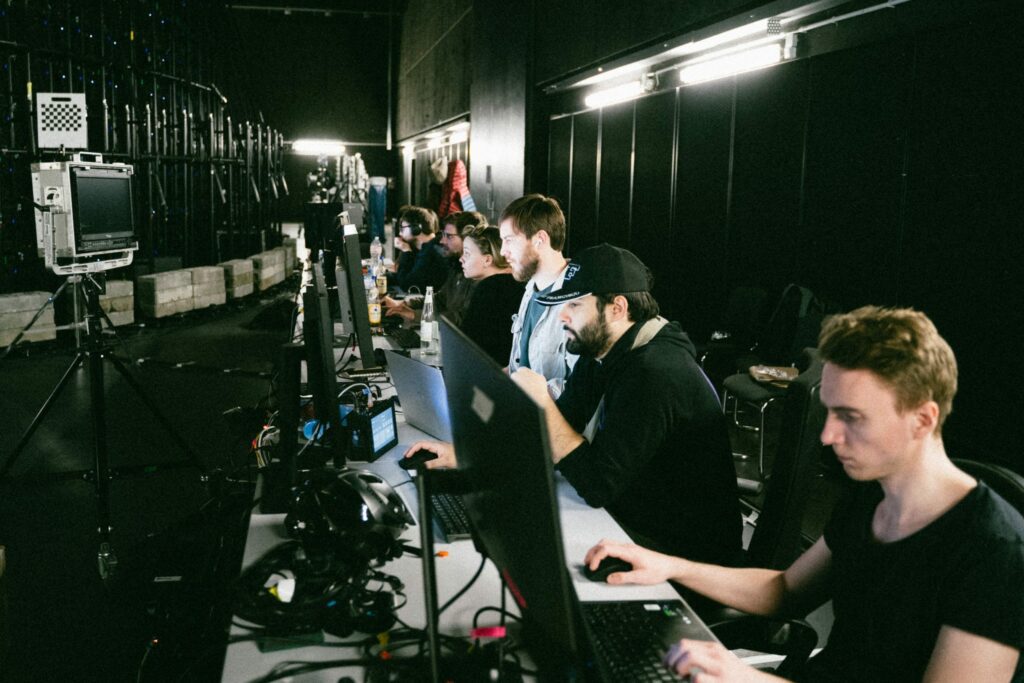A space for hybrid work and a place to try things out
The Film University Babelsberg KONRAD WOLF focuses on interdisciplinary artistic, technological and scientific teaching and research. A remarkable example of such interdisciplinary approaches is the CX Studio, which was founded last year by a team of professors from the Film University led by Dr. Lena Gieseke, Dr. Angela Brennecke and Dr. Björn Stockleben. As a new research facility for audiovisual, immersive and interactive media as well as new forms of production, the CX Studio at the Film University Babelsberg KONRAD WOLF bridges the gap between the creative industry and new media technologies. “We call ourselves applied research,” says Professor Lena Gieseke in the interview.
Collaborative research is an essential part of the CX Studio’s working method, which is intended to promote close cooperation between researchers as well as industry and the university. In the future, the studio will offer a kind of co-working space model in which employees from different companies can work, experiment and train in the studio for a short time. This enables an intensive exchange of knowledge and the development of joint projects that can be carried out over several years.
When equipping the premises, particular emphasis is placed on hybridity in order to enable smooth collaboration both on site and virtually. Thanks to funding from the Investitionsbank des Landes Brandenburg (ILB), the rooms will be equipped with state-of-the-art technology such as cameras, loudspeakers, displays and monitors to ensure effective virtual collaboration. The aim is to create an attractive and functional space that allows users to spontaneously view and try out new technologies. “We want to offer points of contact without the need for long appointments and preparations beforehand. We want to create a place for the CX Studio where it’s worth coming by and spontaneously trying out new things,” says Gieseke.
The CX Studio has the advantage that projects can be bundled for academic project durations. This is also how the original idea for the new research institution came about: from the need to use similar hardware and resources for their projects, the Professor:innen team developed the idea of joining forces and creating a formalized structure in order to appear larger and more substantial to the outside world as well as to better plan equipment and personnel strategy internally. A central goal of the CX Studio is to create long-term employment opportunities for employees who would otherwise have no security due to the often short-lived project financing in science.
Thinking outside the box: projects beyond the entertainment industry
CX Studio is increasingly targeting the creative industry and is involved in several projects in various areas. One example is Wingspan, a virtual production project by Babelsberg-based production company ARKANUM PICTURES, in which a series pilot is produced against the backdrop of an LED wall. This involves many students who use the infrastructure of the CX Studio. At the broadcasting and media technology event Hamburg Open, Lena Gieseke and Björn Stockleben also gave a workshop on AI for the industry.
Special attention is paid to projects that go beyond the entertainment sector. For example, the contemporary witness project, which is developing a VR experience for educational purposes, is based there. A digital archive is being created here with the “Volumetric Testimony of Holocaust Survivors”. Contemporary witnesses share their experiences and memories in interviews and are documented volumetrically. In another project, a team led by Björn Stockleben is developing systems for disaster prevention in collaboration with industrial partners. By simulating scenarios such as flood disasters with augmented reality elements, emergency services can be trained and strengthened in their decision-making in the event of an emergency. These interdisciplinary approaches show how diverse the application possibilities of new media technologies are.
Sustainability in media production
Sustainability in media production, especially in the creative industry, is also on the agenda at CX Studio – here under the direction of Lena Gieseke. At a “Clean Film IT Lab”, representatives of the industry and the Öko-Institut e.V. discussed specific measures and challenges in the field of sustainable media production. An important topic here, for example, is the handling of data waste: “When filming, data is produced on top of data on top of data, much of which is no longer needed – where is it stored and for how long,” says Gieseke. Other climate-damaging aspects, such as diesel generators on set, can also be replaced by CO2-saving alternatives.
During the lab, the development of planning tools was initiated, which show producers the ecological and financial impact of their decisions in advance. Green consultants who accompany the shoot to provide advice can do little on site if the important decisions have already been made in advance. Producers, on the other hand, need planning security and have to calculate the costs and benefits of sustainable production in advance. The idea here is to develop a simulation tool for film productions that tracks and compares costs and CO2 emissions in the calculations.
The CX Studio is currently in the final stages of fitting out its premises and studio laboratory. At the same time, other exciting projects are being launched. In the near future, the studio will become a place where creative and technical innovations go hand in hand and knowledge about sustainable practices in media production is shared. Artificial intelligence will also play an increasingly important role, which will be driven forward by new project proposals and collaborations.
More about the MTH Blog
The media technologies of the future are already being used today – not only in the entertainment sector but in a wide variety of industries. For our MediaTech Hub Potsdam blog, we talk to tech enthusiasts, entrepreneurs and researchers once a month and tell the stories behind their innovative business models, ideas, projects and collaborations.



